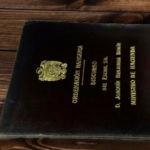A brief history of BBVA (XV): The State’s Tight Grip
Following the urgent measures adopted by Franco’s government to expedite the reconstruction of the economy, the Ministry of Finance redoubled its efforts to strengthen its grip over the banking sector. On the last day of 1946, a new banking law was passed, outlining the new scenario in which institutions would be required to operate during the next decade.

The Banking Act of December 31, 1946, was the last in a series of measures intended to underpin the control, interference and administrative hold that the State proudly exercised over the banking industry. The new provision - also known as the Benjumea Law, after Joaquín Benjumea, the Minister of Finance who signed it - placed special emphasis on two critical areas: on the one hand, the Bank of Spain and other state-owned banks, and, on the other, on private and savings banks.
The new Banking Act also responded to the fact that the previous law - put into effect in 1921 (the Cambó Law) - was written to be in force for 25 years, expiring on the same date that the 1946 act was passed. It is also worth noting that the 1921 law referred mainly to the Bank of Spain’s exclusive right to issue currency.
In essence, the new regulations drew from the same principles that inspired the legislation in force during the 1939-1942 period. The Ministry of Finance was given broader powers to intervene in the Bank of Spain, not only through the governor and the deputy governor, who were appointed by The Council of Ministers, but also by bestowing special powers on the Minister of Finance. Five Government-appointed members were also included in the Bank of Spain’s Governing Board, as well as representatives from other corporate organizations. In addition, the new law ratified the division of the monetary policy that emerged following the creation of the Spanish Institute of Foreign Currency in 1939: the management of the domestic banking sector was left entirely in the hands of the Ministry of Finance, while responsibility over foreign monetary and exchange policies remained with the Spanish Institute of Foreign Currency (IEME - Instituto Español de Moneda Extranjera), an organization linked to the Ministry of Commerce.

Members of the Spanish Institute of Foreign Currency and the Bank of Spain in 1942.
With regard to private banking, the law reestablished the Register of Banks and Bankers, stipulating that only registered bankers and banks would be allowed to engage in the banking business. Logically, this list of bankers included those who had been actors in the banking industry before the civil war. The level of interventionism grew to such an extent that virtually all banking transactions were placed under public control. Other functions of the Ministry of Finance included establishing the minimum capital requirements for financial institutions (based on the geographic area in which they operated) and requiring banks to keep specific equity-to-liability ratios, as well as the ratios between different loan types; and establishing the balance limits for term deposits. Another set of provisions equired the Ministry of Finance to authorize any changes to a bank’s share capital, agreements between banking firms, the distribution of reserves among shareholders, the subscription, purchase or exchange of shares or cross-shareholding between banks and bankers. Finally and unsurprisingly, the new laws also subjected the opening of new branches to the Ministry of Finance’s approval.

Cover of the biography of Joaquin Benjumea, Finance Minister signed the Law of 1946.
The Spanish financial system was restructured into three types of institutions:
- State banking institutions
This group included the Bank of Spain, the Mortgage Bank of Spain, the Industrial Credit Bank, the Local Credit Bank, the Foreign Bank of Spain, the National Agrarian Credit Union, the Fishing Credit Bank, the Credit Institute for National Reconstruction and the Post Office Savings Bank.
- Private banks
The pre-civil war structure remained virtually unchanged, as only minor institutions were dissolved or created during those years. However, the mergers and acquisitions that did take place during that period had a bigger impact. For example, the Bank of Bilbao took over twelve banking entities during the 1940s while Banco de Vizcaya absorbed two smaller firms. Leading banks were able to increase their size and considerably bolster their market share. The only other way to grow was to open branches. Compared to the months leading up to the civil war, the branch network increased by 250 units. Almost 90 percent of the branches belonged to national banks and two-thirds of them were held by the top five lenders of the 1940s. The banking sector became more concentrated and the level of specialization of the institutions remained low. Almost all of them combined short-term credit transactions with long-term lending operations, as well as investment in other entities, obliging them to take part in the management and supervision of those companies.
- Savings banks
The law was particularly strict with savings banks. They reported to the Ministry of Labor, which set the pace for them, with a strict policy of compulsory investments, while severely limiting their autonomy as credit institutions. In the same way, it restricted their scope of action to the province – or the region at most - to which they belonged.<0} In 1947 a new decree imposed new regulations on savings banks, standardizing their activities and linking them even further to the National Housing Institute which had been founded in 1942. On the other hand, new regulations required savings banks to devote 60% of their funds to the purchase of public securities. In spite of the significant regulatory requirements imposed by the state, the number of savings banks kept growing, driven by the increasing interest from provincial councils. In the late 1940s, one-sixth of the system's deposits were managed by savings banks.